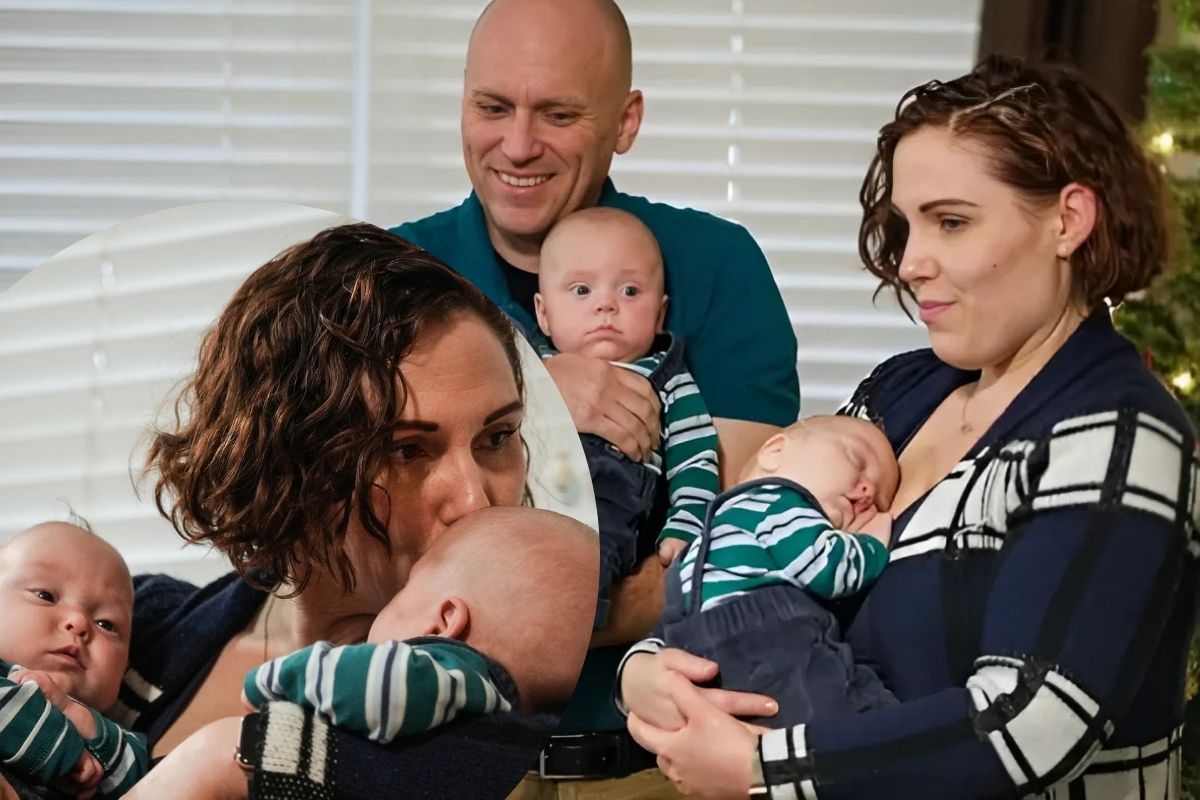


This journey, traversed by Emilie Vogas and her twin kids, Ezra and Wally, is the testimony of resilience, marvels of modern medicine, and hopefulness that a family has in itself always. As early as pregnancy, there was a 3% survival rate assigned to him; yet, Wally rose to counter predictions against all odds through devoted health workers and the very special environment within the womb. Read below for an extensive research on this incredible tale:.
Emilie Vogas developed a problem 13 weeks along that would characterise her pregnancy. A fast “pop” indicated that Wally’s amniotic sac had burst, thus causing almost complete loss of the protecting amniotic fluid vital for embryonic growth. Usually deadly for the fetus, this disorder is called preterm premature rupture of membranes (PPROM).
Dr. Grace Johnson, maternal-fetal medicine expert at Texas Children’s Hospital, explained the crucial role fluid plays in fetal lung maturation. Without enough fluid, the fetus’s ability to practice breathing movements is severely compromised, potentially leading to underdeveloped lungs. In addition, both Emilie and Wally’s rupture increased their chances of infection.
They received the worst diagnosis and were prepared to lose one of their twins, but then unexpected events offered them a glimmer of hope.
Emilie had no signs of sickness and an ultrasound one week after the first rupture showed an extraordinary development: both twins possessed strong, steady heartbeats. This information had improved Wally’s survivability to 25%. Weekly monitoring brought cautious hope as Wally showed positive signs of renal development and chest development.
Medical practitioners hypothesized that Ezra’s position in the womb would have acted as a natural plug, thus restricting fluid loss from Wally’s amniotic sac. This unique interaction between the twins proved to be very vital for Wally’s survival.
Texas’s tight abortion regulations added a third layer of complexity to the situation for the Vogas family. These regulations raised questions on access to appropriate medical treatments if Emilie were to succumb to life-threatening sepsis or if issues threaten both twins. As much as they did not finally require out-of-state treatment, the family’s anxiety highlights the important crossing point between legislative policy and medical decisions.
At 26 weeks gestation, after nine weeks of close monitoring, Emilie began exhibiting symptoms of a serious illness. It was then that the doctors determined it was time for delivery since both she and Ezra’s heart rates were rising and her fever was raging.
Emilie was delivered through a cesarean section in Texas Children’s Hospital on June 24. Three specialist teams attended to Emilie, Ezra, and Wally during the process. The delivery was an emergency, but the procedure was described as peaceful and painstakingly managed.
Ezra and Wally were born just minutes apart. Remarkably, Wally surprised the medical team by breathing on his own—a feat previously deemed unlikely given his early challenges.
Both boys required neonatal care at birth; Wally, in particular, lags about two weeks behind Ezra’s development. Sept. 26 saw Ezra discharged from the hospital; Wally followed on October 10. Wally initially was requiring supplemental oxygen, but he has thrived extremely well and is now ventilator independent.
Neonatologist Dr. Mark Thompson of Texas Children’s voiced hope for Wally’s long-term growth. Although both twins will be under observation for several years, Wally’s present course points to his reaching developmental levels similar to those of his sibling.
The fact that Wally survived puts more emphasis on the modern treatment of the mother-fetus and care of a newborn. From the identification of important issues early through the delivery of a high-risk birth, knowledge possessed by the medical team is absolutely indispensable to ensure outcomes are of the best caliber.
Not less remarkable is Emilie’s tenacity and relentless drive. Her boys had the greatest shot at life thanks in great part to her devotion to medical advice and readiness to go through weeks of hospital observation.
The account of Wally and Ezra is a riveting one of optimism, creativity, and the resiliency of the human spirit over all. It underlines the possibility for remarkable results even with terrible medical forecasts. The Vogas family finds inspiration and a reminder of the marvels made possible by compassion and modern medicine as they watch their twins flourish.
